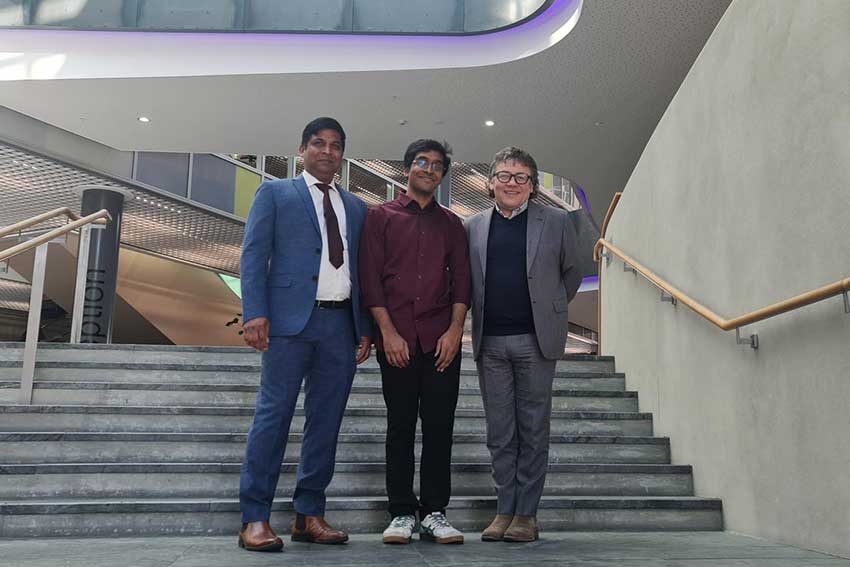BITS student joins electronics project

Preetham Reddy Kasarla, a 20-year-old Bachelor of Electronics and Electrical Engineering student from Birla Institute of Technology and Science (BITS) Pilani, recently immersed himself in a distinctive research project at Auckland University of Technology (AUT). Hailing from Hyderabad, Telangana, he arrived in New Zealand in May. His internship involved designing terahertz antennas on chip - a highly specialised area within electronics that involves creating extremely small, high-frequency antennas.
Under the mentorship of Professor Xuejun Li from AUT's School of Engineering, Computer and Mathematical Sciences, Preetham used advanced facilities and the Ansys HFSS (high-frequency structure simulator) software to explore antenna theory and design.
“I came here and learned about antenna design and theory and how to design on HFSS,” he said. The project explored tackling unique challenges in manufacturing and efficiency due to the small size of terahertz antennas.
Although the internship was not for academic credit, Preetham plans to continue the research upon returning to India, collaborating with his mentor, Professor Sourav Nandi, at BITS Pilani. His aim is to explore and overcome the manufacturing challenges of nanoscale antennas and potentially develop prototypes at his university’s new antenna facility. Preetham said these antennas have significant applications in biomedical fields and high-speed communication technologies.
The opportunity for this internship arose after Preetham reached out to AUT Senior Lecturer Dr Ashwin Polishetty, who had visited BITS Pilani last year.
“I saw a LinkedIn post about Dr Polishetty’s visit and sent him my resume, and he connected me with Professor Xuejun Li.”
Dr Polishetty said: “This was a unique opportunity to connect BITS Pilani and AUT through student internships and to confirm AUT’s commitment to collaborate with top-ranking universities in India for research and academic purposes.”
Preetham appreciated AUT’s support, which included covering accommodation and expenses. He said the labs at AUT were excellent, particularly for running simulations.
Looking ahead, Preetham is excited about his career prospects, balancing his interest in on-chip electronics with his experience in robotics. The internship has been a valuable learning experience, and he hopes to apply the knowledge and experience to future projects in both electronics and robotics.
AUT Pro-Vice-Chancellor International Guy Littlefair said: “Preetham’s project underscores the benefits of international research collaborations and highlights the potential impact of advanced technology across various fields. One of our more recent foci has been on the opportunities for student mobility and this is an example of where we have supported an opportunity for collaboration at the research student level.”